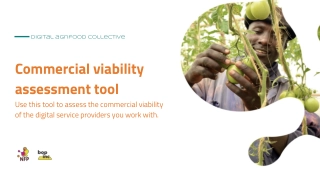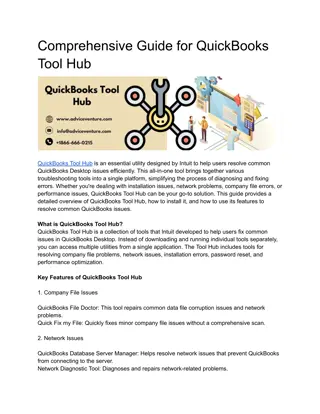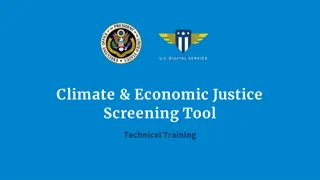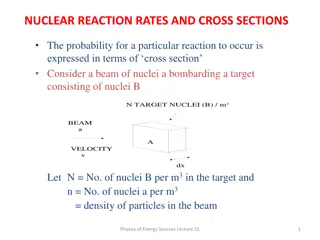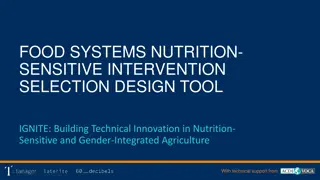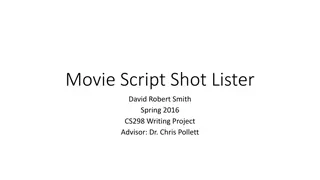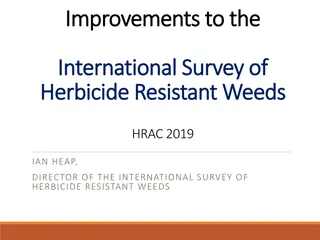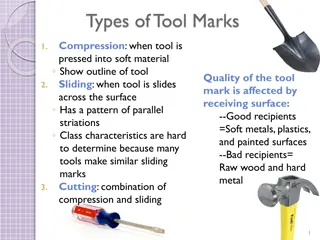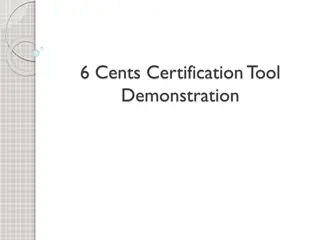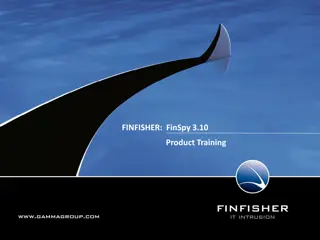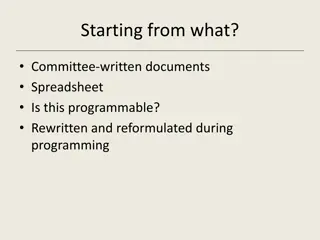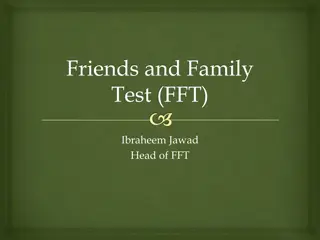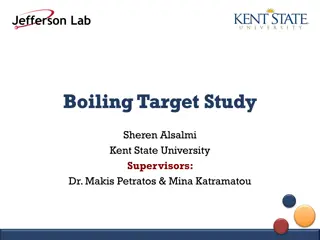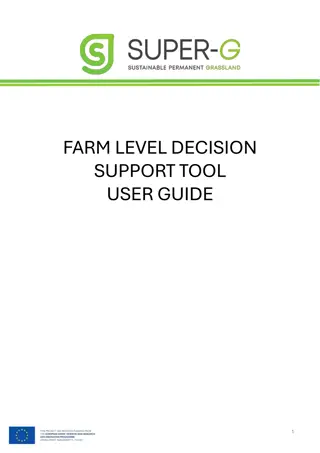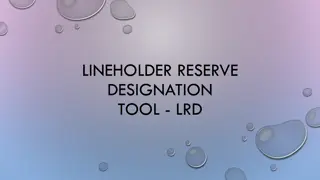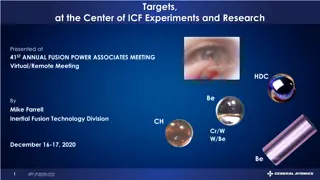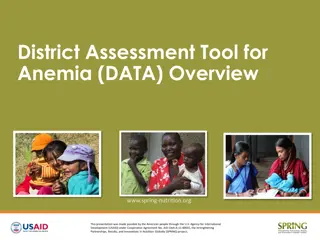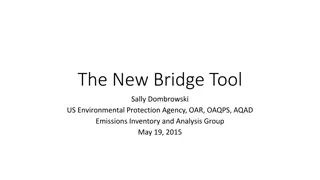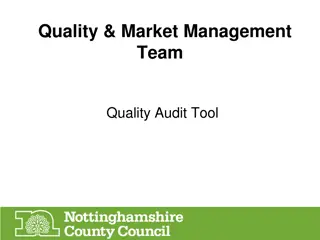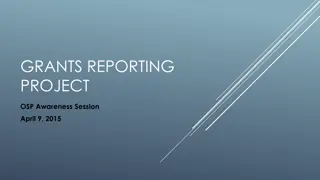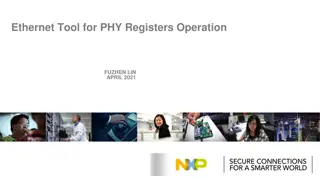
Implementing Business Architecture Tools at Target Forum
Explore the journey and challenges of implementing a new Business Architecture tool at Target, focusing on adapting to circular data relationships and defining processes to support future strategies. Learn how target teams collaborate, communicate, and manage capabilities to drive enterprise success.
Download Presentation

Please find below an Image/Link to download the presentation.
The content on the website is provided AS IS for your information and personal use only. It may not be sold, licensed, or shared on other websites without obtaining consent from the author. If you encounter any issues during the download, it is possible that the publisher has removed the file from their server.
You are allowed to download the files provided on this website for personal or commercial use, subject to the condition that they are used lawfully. All files are the property of their respective owners.
The content on the website is provided AS IS for your information and personal use only. It may not be sold, licensed, or shared on other websites without obtaining consent from the author.
E N D
Presentation Transcript
Twin Cities Business Architecture Forum File:Bullseye.bmp 1/19/2016 Target s BA Tool Journey Background Our needs and basic requirements for a BA-specific tool How we classified tools in terms of abilities, value and investment Key challenge: circular data relationships that answer BA questions. Strategy, capabilities, projects, people, tools, etc. are related in real life, but how to adapt to an off-the-shelf tool? Ideas on how to implement a new BA mindset, process, and tool in a way that is useful and sustainable
Background: Business Architecture is new to Target again Prior to 2015, Business Architecture within Target was somewhat fragmented and not elevated to enterprise status Formation: BA became centralized, part of Enterprise Strategy, mid-2015, team grew to 30+ team members BA charge: manage capabilities supporting future strategies Situation: BA left to define how it would operate Complication: Our partner teams were also in the same boat Goal: Define our processes and tools in a way that helped us plant a flag, but remain flexible to adapt to other partner teams evolving operations 2
Defining need: process and stakeholders we want to support by using the tool Function Definition Stakeholders Process 6 1 Orchestrate collaboration Coordinate activities between stakeholders Prioritize new and critical work Executives Strategy Planning Goals and Metrics Map Business Capability Framework (BCF) dependencies 2 Relationships between strategies and capabilities Communicate 7 3 Business Architecture Translate strategy to capability language Sequence projects for shortest time, lowest $ and least people Develop roadmaps Communicate enterprise priority 4 Communicate Capability Enablers Create and monitor projects Create and track projects, monitor duplication Finance PMO Technical 5 Prioritize current vs. new work Communicate roadmap Manage roadmaps, tailor to inform and support decisions 3
Defining need: The challenge we are addressing is orchestrating enterprise strategy to execution Process: Generate epics from EKIs and organize their execution Strategies EKIs Epics Track Execution Manage Results People: Several pyramids and many teams need to work in concert Strategy TTS EDABI Business Finance Strat Exec BA 35 product groups across 104 teams Enterprise Architects 5 major areas, 140 teams Accountable Owners Ops teams Planning Communication: Many methods tools available, and currently used, by different teams Excel SAP JIRA Trello MS Project PPT SharePoint VersionOne SmartSheets Outlook 4
Defining need: To incent adoption, we focused on simplicity and effectiveness of user experience 1.User a. Manipulate data flexibly (e.g., view by strategy, capability, technology, investment, etc.) b. Fast, responsive self-service any time, intuitive, easy to use c. Export data, analysis, graphs 2.Process a. Users interact depending on role and access level b. Supports decision making i. What happened and why? ii. What will happen? What if? iii.What are my options to improve the outcome? 3.Technology a. No installation and no IT support b. Low cost and low barriers to learn 5
Classifying tools: Differentiated and focused on lightweight architecture tools 1. What are we calling a lightweight tool? Focused on business architecture (i.e., limited features) Cloud-based tool with no installation or IT support BA can set up and maintain with little technical background 2. What is a heavyweight tool? EA Tools Supports and houses enterprise (IT applications and infrastructure), operations and process (e.g., detailed workflow) information ,and business architecture Require classical large tool implementation (i.e., $$$, time, people) Used and supported by multiple teams 3. Why a lightweight and not a heavyweight tool? A lightweight tool is easier to understand, we can use most features A heavyweight tool has many more features and abilities than we will need anytime soon 6
Classifying tools: Mapped a variety of tools relative to our needs Function Definition Stakeholder Process 6 1 Orchestrate collaboration Prioritize new and critical current work Create EKIs with Metrics and Goals Executives Strategy Planning Map Business Capability Framework (BCF) dependencies 2 Communicate Metrics and Goals 7 3 Business Architecture Translate strategy to capability language Develop roadmaps Communicate enterprise priority 4 Create and monitor projects Communicate Capability Enablers Finance PMO Technical 5 Prioritize current work vs. new work Communicate roadmap 7
Adapting reality into a tool: Mapped relationships between BA data elements 1. Mapped two types of relationships: associated (A) and hierarchical (H) data 2. Mapped how it is structured in the tool 2 1 Hierarchical relationship: one-to-one Association: many-to-many links possible H A 1 Bus or Tech/Proc Team BCF Portfolio Project EKI Apps Bus Process H: L to R Tech/Proc Org Capability Framework B/T/P Org T/P Team Portfolio Project Strategies Apps Bus Process A A A A A A H A A A A H A H A A A A A A A H A A A A A A H A A 2 1 Hierarchy of data Hierarchy of data Relationship can be seen but not defined directly Hierarchy Element How data is entered Data association defined Indirect relation, many-to-many Sub hierarchy element Hierarchical relationship defined Strong, close or causal relationship, or 1-to-1 Entered data and relationships into the BA tool, as best as possible 8
Adapting reality into a tool: Visual representation of the BA relationships Visualizing the relationship map created a structure both logical enough to be built into a tool, and understandable enough to adapt to a common BA approach 1 Organization Hierarchy Decision and Action Hierarchy Enterprise Key Initiatives or Strategies Business or Technical / Process Organizations Portfolio of Projects Teams Individual Projects Applications Translation Hierarchy High Level Business Process Business Capability Framework 9
Adapting reality into a tool: Mapping the relationships showed fit for purpose 2 Relationship can be seen but not defined directly Data association defined Associated or hierarchy Organization Hierarchy Decision and Action Hierarchy Enterprise Key Initiatives or Strategies Strategy Organizations Organization Top / Child Elements Business or Technical / Process Organizations Resources Organization Units Strategy Organization [Strategy] [Elements] Projects Strategy Resources Teams [Edit Detail] Capabilities Capability Models [BCF lowest level] People, Process, Technology Portfolio of Projects Planning Projects Teams Resources Teams Planning Projects Project List Project Canvas Planning Projects Project List Project Canvas Capabilities Capability Models [BCF lowest level] People, Process, Technology Planning Portfolio Capabilities Capability Models [BCF lowest level] Projects & Requirements VS. People, Process, Technology Individual Projects Planning Projects Applications Resources Applications Capabilities Capability Models [BCF lowest level] People, Process, Technology Capabilities Capability Models [BCF lowest level] People, Process, Technology Planning Projects Project List Project Canvas Translation Hierarchy High Level Business Process Capabilities Value Streams Capabilities Value Streams Add/Edit Business Capability Framework Capabilities Cap Models Create 10
Nurturing a Business Architecture tool mindset: We are at the beginning Recruit a tool team representing the ultimate user group Give the team: A vision of how BA will operate, process and tool-wise A tool with a basic set of relationships built-in A representative set of BA questions as part of job A way to evaluate and document questions and needs (next slide) A set of milestones to time-bound the effort Leader guards the fence so team stays within scale and scope Result: team has improved on what was given, and has reached a common view that is the key to scale to the rest of the team 11
BA Mindset: Using evaluation of tools to illustrate the general value addressed and training needed Approach helps us assess tools and identify areas of training needed 12

